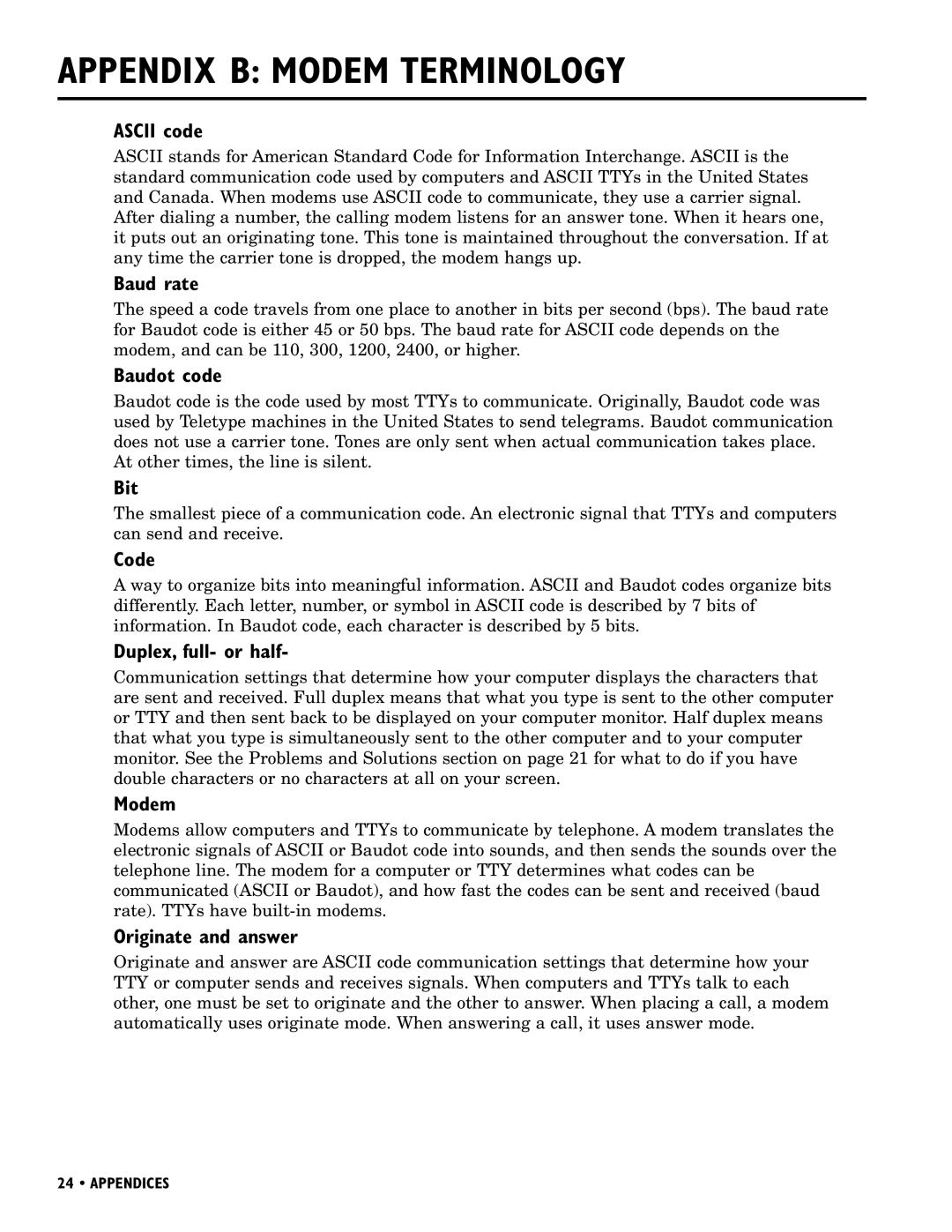APPENDIX B: MODEM TERMINOLOGY
ASCII code
ASCII stands for American Standard Code for Information Interchange. ASCII is the standard communication code used by computers and ASCII TTYs in the United States and Canada. When modems use ASCII code to communicate, they use a carrier signal. After dialing a number, the calling modem listens for an answer tone. When it hears one, it puts out an originating tone. This tone is maintained throughout the conversation. If at any time the carrier tone is dropped, the modem hangs up.
Baud rate
The speed a code travels from one place to another in bits per second (bps). The baud rate for Baudot code is either 45 or 50 bps. The baud rate for ASCII code depends on the modem, and can be 110, 300, 1200, 2400, or higher.
Baudot code
Baudot code is the code used by most TTYs to communicate. Originally, Baudot code was used by Teletype machines in the United States to send telegrams. Baudot communication does not use a carrier tone. Tones are only sent when actual communication takes place. At other times, the line is silent.
Bit
The smallest piece of a communication code. An electronic signal that TTYs and computers can send and receive.
Code
A way to organize bits into meaningful information. ASCII and Baudot codes organize bits differently. Each letter, number, or symbol in ASCII code is described by 7 bits of information. In Baudot code, each character is described by 5 bits.
Duplex, full- or half-
Communication settings that determine how your computer displays the characters that are sent and received. Full duplex means that what you type is sent to the other computer or TTY and then sent back to be displayed on your computer monitor. Half duplex means that what you type is simultaneously sent to the other computer and to your computer monitor. See the Problems and Solutions section on page 21 for what to do if you have double characters or no characters at all on your screen.
Modem
Modems allow computers and TTYs to communicate by telephone. A modem translates the electronic signals of ASCII or Baudot code into sounds, and then sends the sounds over the telephone line. The modem for a computer or TTY determines what codes can be communicated (ASCII or Baudot), and how fast the codes can be sent and received (baud rate). TTYs have
Originate and answer
Originate and answer are ASCII code communication settings that determine how your TTY or computer sends and receives signals. When computers and TTYs talk to each other, one must be set to originate and the other to answer. When placing a call, a modem automatically uses originate mode. When answering a call, it uses answer mode.
24 • APPENDICES
